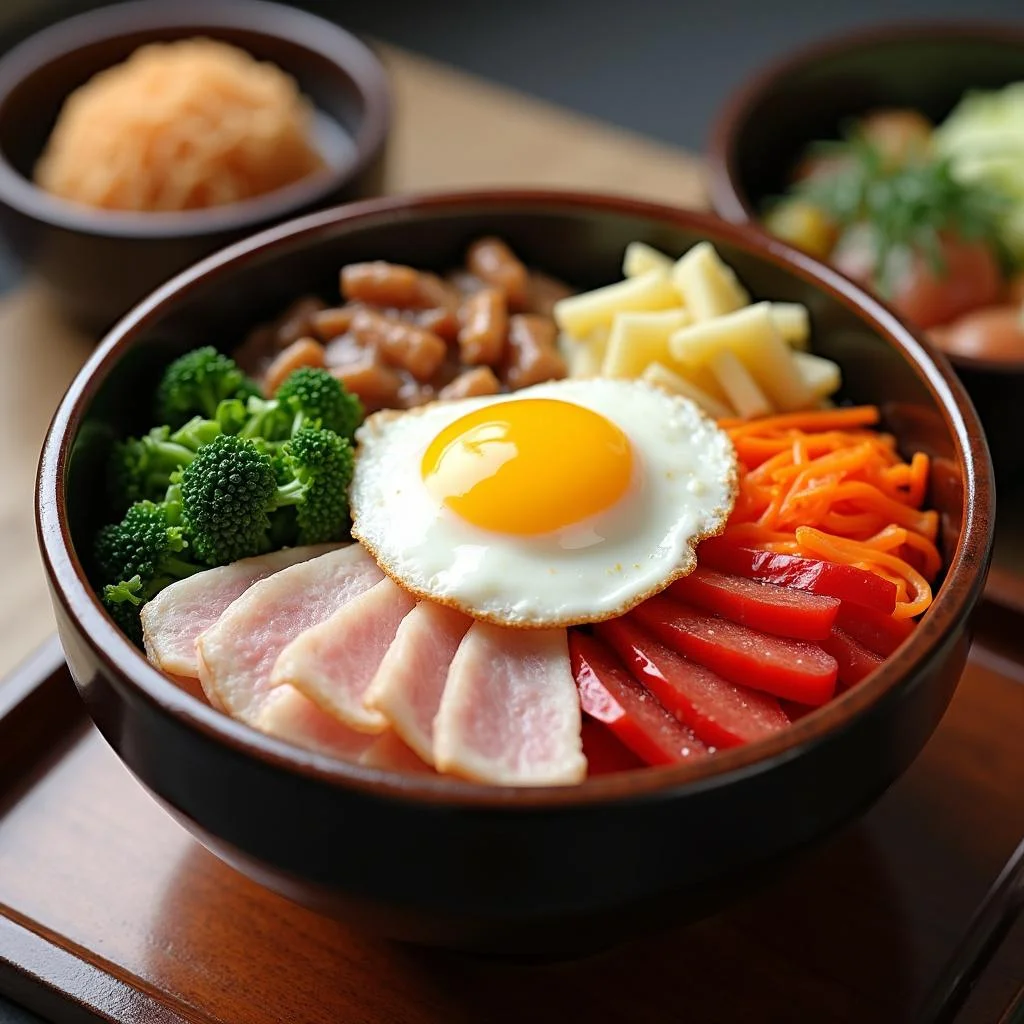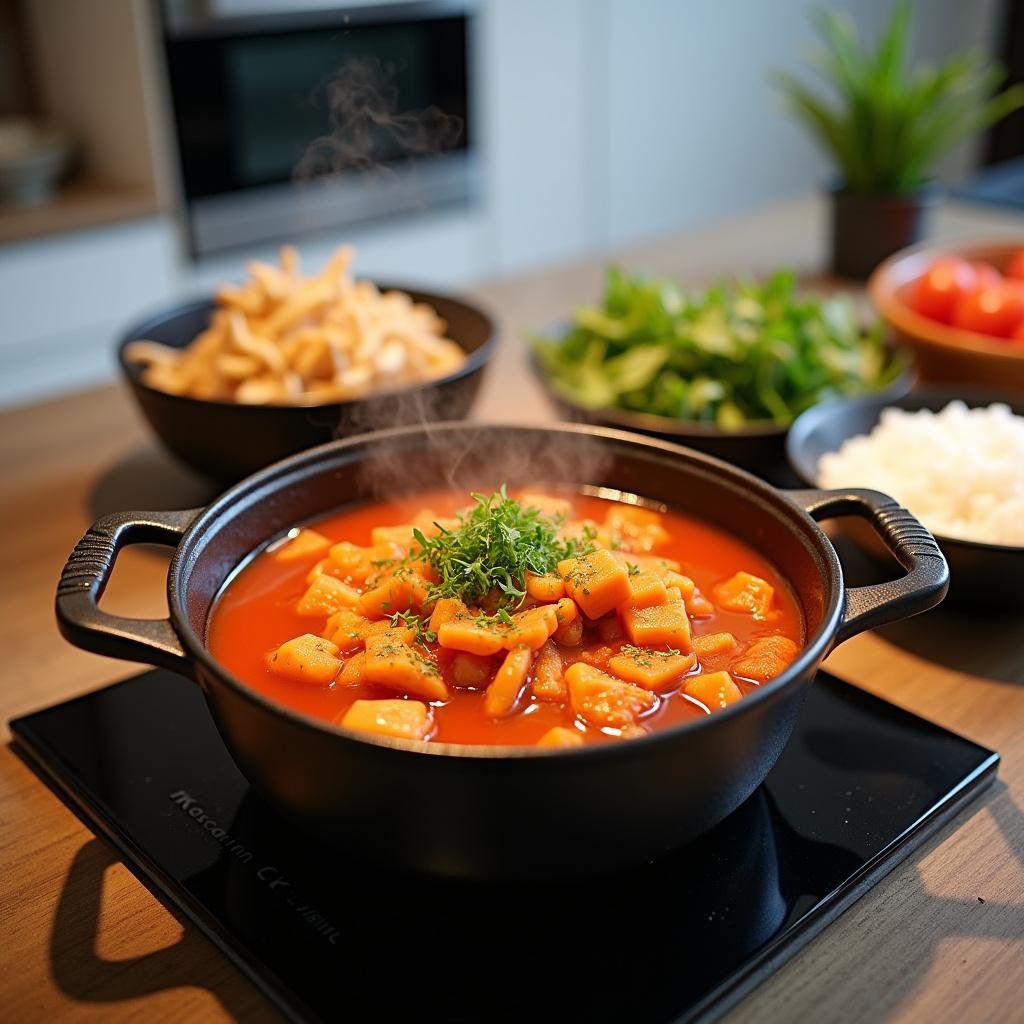1. Introduction
Embarking on a journey to explore Korean cuisine can be both exciting and rewarding, especially for beginners eager to try authentic flavors without feeling overwhelmed. Korean dishes are renowned for their bold tastes, vibrant ingredients, and rich cultural heritage. In this article, we will introduce you to 5 easy Korean dishes for beginners that are simple to prepare, delicious, and perfect for those new to Korean cooking. Whether you’re looking for a hearty meal or a unique appetizer, these dishes will help you confidently dive into Korean culinary traditions. Prior to diving into the recipes, ensure you have essential tools like the Ninja SLUSHi with RapidChill Technology to perfect your rice and vegetables, and a reliable Fullstar Vegetable Chopper and Spiralizer for quick prep.
2. Why Choose These 5 Easy Korean Dishes for Beginners
Starting with the right recipes can make all the difference when exploring Korean cuisine. These easy Korean dishes for beginners are selected for their straightforward ingredients, simple cooking techniques, and authentic flavors. They require minimal prep time and are perfect for home cooks new to Korean food, ensuring a rewarding cooking experience that inspires further exploration of this vibrant culinary world. Plus, having quality cookware such as the CAROTE Nonstick Pots and Pans can greatly simplify your cooking process.

3. Top 5 Easy Korean Dishes for Beginners
Simple Bibimbap for Beginners
Ninja Air Fryer Pro 4-in-1 can help you perfectly cook vegetables and eggs for your Bibimbap. This colorful mixed rice dish features an array of fresh vegetables, a fried egg, and a spicy gochujang sauce. It’s incredibly customizable; just cook your rice and sauté vegetables like spinach, carrots, and zucchini, then assemble everything in a bowl, top with an egg, and add a spoonful of gochujang for an authentic Korean flavor. To make prep easier, consider using the Fullstar Vegetable Chopper and Spiralizer.
Korean Beef Bulgogi for New Cooks
To get started with Bulgogi, you’ll need thin slices of beef, which you can quickly prepare using the CAROTE Nonstick Pots and Pans. Marinate the beef in a simple mixture of soy sauce, sugar, sesame oil, garlic, and pear juice—this marinade tenderizes the meat and infuses it with flavor. With minimal effort, you can stir-fry this dish using a basic pan or slow cooker, such as the Crock-Pot 7 Quart Oval Manual Slow Cooker. Serve it with rice and kimchi for an easy Korean meal that’s sure to impress.
Spicy Tofu Stew (Soondubu Jjigae)
This Ninja Blender-assisted stew is perfect for beginners wanting a comforting yet spicy dish. Use soft tofu, chili paste, vegetables, and seafood or pork—adding ingredients directly into a pot, simmering quickly creates a warming, spicy broth. It’s a quick recipe that doesn’t require advanced skills, making it ideal for novice cooks. Preparing it can be simplified further with tools like the TOSHIBA Microwave Oven for reheating side dishes or quick broiling.
Korean Cold Noodles (Naengmyeon)
Fresh and bright, Korean Cold Noodles are ideal for hot days or when you need a light, satisfying meal. Using boiled buckwheat or sweet potato noodles, rinse them in cold water and serve with a tangy broth, sliced cucumbers, boiled eggs, and beef slices. The preparation involves just boiling noodles and assembling, making it an excellent choice for busy weeknights. You can enhance the experience with the Ninja FlexFlame Grill and Smoker for grilling your beef slices.
Pajeon (Green Onion Pancake)
Made from a simple batter of flour, water, and eggs, then enriched with chopped green onions and optional seafood, Pajeon is a popular and easy Korean pancake. Pan-fried until crispy, it pairs perfectly with soy or dipping sauces. This dish is a fantastic starting point for family bonding dinners thanks to its straightforward technique and shareable nature. Consider using the Ninja Air Fryer to make healthier versions of this crunchy favorite.4. Tips for Successfully Preparing Korean Dishes at Home
- Use fresh ingredients, especially vegetables and herbs, to enhance authentic flavors.
- Don’t be afraid to adjust spice levels; Korean cuisine offers a range from mild to fiery.
- Invest in basic Korean condiments such as gochujang, soy sauce, sesame oil, and kimchi for added flavor.
- Start with simple recipes and gradually explore more complex dishes as your confidence grows.
- Follow authentic recipes and overlook fear of missing perfect techniques; practice makes perfect.
5. Frequently Asked Questions (FAQs) About Easy Korean Dishes for Beginners
What are the easiest Korean dishes for beginners?
Some of the easiest Korean dishes for beginners include Bibimbap, Bulgogi, Tofu Stew, Cold Noodles, and Pajeon. These recipes combine simple ingredients, straightforward techniques, and authentic flavors that don’t require advanced cooking skills. For additional beginner-friendly tips, check out easy recipes for busy mornings.
Can I make Korean dishes without special ingredients?
Absolutely! While traditional recipes often use specialized condiments like gochujang or kimchi, you can find suitable substitutes or make your own. Basic pantry ingredients such as soy sauce, garlic, sesame oil, and vegetables are easy to adapt and available at most grocery stores. To style your ingredients efficiently, a good KitchenAid Stand Mixer can simplify dough or batter preparation for dishes like Pajeon or bread-based recipes.
How long does it take to prepare these Korean dishes?
Most easy Korean dishes for beginners listed here can be prepared within 30 to 45 minutes. These recipes are ideal for quick weeknight dinners or casual weekend cooking. As you become more familiar with techniques, you can reduce prep time even further, ensuring you enjoy authentic Korean flavors without spending hours in the kitchen. The Cuisinart Bread Maker can also help prepare homemade accompaniments swiftly.
6. Conclusion
Getting started with Korean cuisine doesn’t have to be complicated. These 5 easy Korean dishes for beginners offer a fantastic way to introduce yourself to the rich flavors and diverse techniques of Korea. By mastering these simple recipes, you can develop your cooking skills, enjoy delicious meals, and even inspire your friends and family to join your culinary adventure. Remember, the key to success is to have fun, experiment, and savor every bite of your homemade Korean dishes. For more creative ideas, explore interactive dinner ideas for family bonding.

